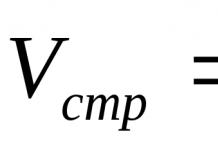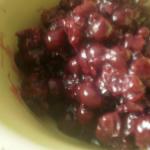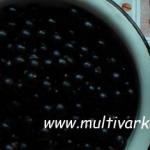Subject: Spelling verbs in the past tense.
Educational program: School of Russia.
Target: Create conditions for awareness and comprehension of knowledge on the topic “Spelling verbs in the past tense.”
Tasks:
educational:
create conditions for familiarization with the rule of writing generic endings of verbs in the past tense;
improve the ability to write correctly and highlight gender endings of past tense verbs;
promote the development of the ability to determine the grammatical features of a verb;
analyze, generalize, draw conclusions
developing:
formulate new ways of action, teach work according to plan;
develop the emotional sphere, creative thinking, cognitive activity, memory and coherent speech of students.
educational:
instill in children self-control over monologue speech;
cultivate an attentive attitude towards others;
develop the ability to listen to each other.
make connections with the child's life experiences
cultivate interest in the Russian language
Formed UUD:
Cognitive:
independent identification and formulation of a cognitive goal;
conscious and voluntary construction of statements in oral and written form;
analysis, comparison, classification of objects according to selected characteristics;
synthesis, summing up the concept
Regulatory:
setting a learning task;
determining the sequence of intermediate goals taking into account the final result;
anticipation of the result and level of assimilation, its time characteristics;
assessing the quality and level of mastery of the material;
planning your activities in accordance with the purpose of the lesson;
Communicative:
the ability to express one’s thoughts with sufficient completeness and accuracy in accordance with the tasks and conditions of communication
the ability to understand the speech of others and negotiate rules for working in a group.
Forms of work: frontal, individual.
Equipment: computer, multimedia projector, screen, board, textbook.
Lesson duration: 40 minutes.
During the classes
| Lesson stages. Target. Time. | Teacher activities | Student activities | Formed UUD |
| 1. Limiting torque (1 min) | Hello children! My name is Lydia Mikhailovna, and today I will give you a Russian language lesson. Guys, today I invite you to take a virtual trip to the planet called Morphology, where various parts of speech live and visit the city of Verbs. We'll set off on this rocket. Please fasten your seat belts, I'm starting the countdown - 3,2,1 ..Start! | Greetings from the teachers. They take a seat. They open their notebooks, write down the number, great job. Follow the teacher's instructions. | Regulatory UUD: accept the learning task and follow the teacher's instructions. |
| 2. Updating basic knowledge and motivation. (5 minutes) | And our assistant will be..., but what kind of assistant this is, you will guess when you guess the riddle. Read it. How many of you can tell what this riddle is about? Yes, that's right, it's a computer. Recently, it has been difficult for a person to live without this electronic machine. After all, now a computer can replace a typewriter, a calculator, a TV, a stereo system, a telephone, and a telegraph. This is a kind of machine that helps to travel in space and time. Write the word computer in your spelling dictionary, highlight the spellings, and add emphasis. Pay attention to the pronunciation of this word computer[er]r. | - Read the riddle. - Computer. - Write the word in the dictionary. | Regulatory UUD: carry out self-monitoring of educational activities, take into account the action guidelines identified by the teacher in the educational material; |
| 3. Self-determination for activity. (5 minutes) | Read the poem. He woke up, squinted, sat up, smiled. He pulled back, closed his eyes, stood up, and stretched. He looked, combed his hair, soaped, washed. Yawned, smiled, cleaned, shaved. What is interesting about this poem? In what tense are the verbs used? Prove it. Formulate the objectives of the lesson. | Read a poem. It consists only of verbs . - In the past, since they answer the question What did? and have the suffix -l-. Repeat everything we know about verbs in the past tense, learn new information about them. | Communication UUD: negotiate, come to a common decision. |
| 4. Work on the topic of the lesson. (10 min.) | Have you guys noticed who is meeting us? This is the boy Pochemuchka, who sits thoughtfully and waits for you to help him answer the question. Read it. Who will help Whychka? But Pochemuchka today prepared not only questions, but also assignments. Read task 1 and complete it in your notebook. Now let’s check the spelling of verbs with missing spellings. Attention to the screen. What spelling is missing in all these verbs? We read verbs, proving the correct spelling. Now open your textbooks on page 109 and read exercise 229 Read an excerpt from the fable expressively. Read the assignments. How to distinguish a preposition from a prefix? What words will you write together? Read them. What words will you write separately? Read them. In which words does the prefix indicate the beginning of an action? (Clicked and whistled.) Name the verbs in the past tense. By what signs did you recognize them? Complete the written assignments for the exercise. | Answer the question (What did you do, what did you do, what will you do...) The building is being completed. They check. Open the textbook and read the assignment. | Communication UUD: allow for the existence of different points of view, come to a common decision on controversial issues; Personal UUD: wide interest in new educational material, ways to solve new educational problems, research activities in the field of the Russian language. Regulatory UUD: carry out step-by-step control under the guidance of a teacher and independently; |
| 5. Physical training | I perform movements according to physical minutes. | Doing physical exercises | Communication UUD: cooperate with comrades when performing tasks in pairs: establish and follow the order of actions, compare the results obtained, correctly report errors to a comrade; |
| 6. Continuation of work on the topic of the lesson. | And Pochemuchka is waiting for us again, who is ready to ask you the next question. How do verbs change in the past tense? Open the textbook on page 110. Now we will look at the table and answer the question Why. And now Jerry the mouse asks for your help. Read what needs to be done? Remember the rule and cover the question marks in the verbs with the necessary suffixes. Now we will do exercise 232. What endings do singular past tense verbs have? Read the material in the “Pay attention!” section. What have you learned about the verb suffix? -l-? | Open the textbooks and look at the table. They look at the screen, read the task and complete it. Open and read the task. | Communication UUD: monitor the actions of other participants in the learning process. Regulatory UUD: take into account the action guidelines identified by the teacher in the educational material. |
| 7. Reflection. | Our journey is nearing its end, but in order to land safely, we will complete the last task. We will answer your questions. So what do we now know about past tense verbs? What questions do they answer? What suffix do they have? How do they change? How to determine the gender of a verb? What suffix is written before the suffix - l? Now open your diaries and write down your homework, p. 109 exercise. 229 | What did you do? What did you do? what did you do? what did you do? what did it do? what did it do? what they were doing? what did you do? They have the suffix - l -. By numbers, and in the singular and by gender. The gender of a verb is determined by the gender of the noun with which the verb is associated in the sentence. In past tense verbs before the suffix - l– the same suffix is written as before -th in an indefinite form. Open diaries and write down homework. | Communication UUD: understand the content of the questions and reproduce the questions. Regulatory UUD: follow the teacher's instructions. |
Target. Expand students' knowledge about the peculiarities of using verbs in the past tense form. Develop the ability to correctly write generic endings of verbs in the past tense.
During the classes
1. Organizational moment
2. Checking homework
3. Spelling warm-up:
4. Calligraphy
5. Based on the material ex. 191 children observe the change of verbs in the past tense according to numbers, and in the singular - according to gender. After completing the task, students conclude that the subject agrees with the predicate, the expressed verb in the past tense, in number, and in the singular- kind of. We perform the exercise with commentary.
6. Before performing the exercise. 192, students should be introduced to the rule on p. 117. First, students read short sentences that consist exclusively of the main members - subjects and predicates, then put nouns (subjects) in the singular form and write down the resulting sentences.
Physical education minute
7. According to the assignment for exercise. 193 students must compose and write down one sentence about each funny person. In order for the story to be coherent, you should find a beginning to it that would justify the use of verbs in the past tense. There may be such options.
Yesterday everything went as usual in Sunny City. Znayka solved problems in mathematics. Tsvetik composed poems and read them from the balcony... In the morning, work was in full swing in Sunny City...
8. Homework. Ex. 194.
9. Summing up the lesson.
10. Reflection
Lesson 95
Subject. Spelling past tense verbs.
Target. Learn to correctly use unstressed vowels in writing before -l- in past tense verbs. Compose text based on pictures.
♦ Help reduce anxiety levels in the classroom.
♦ Foster love for one’s native land
During the classes
1. Organizational moment
2. Checking homework
3. Spelling warm-up:
4. Calligraphy
5. Ex. 195 leads students to understand the rule for writing unstressed vowels before a suffix -l- in past tense verbs.
It is advisable to clearly show students that before the suffix -l- the same letter is written as in the infinitive form of the verb: to see- saw, build- built. This conclusion Students can do it on their own, then you can ask them to read the rule. In order to save time, you don’t have to copy out the text, but write down only verbs in the past tense form.
6. Ex. 196 is aimed at strengthening the ability of schoolchildren to correctly write verbs in the past tense form. You can suggest doing the exercise yourself. A collective check will help to identify how children have learned this topic.
Physical education minute
7. When composing a story based on a series of plot drawings (Exercise 197), students use the following verb phrases: watered the flowers, distributed notebooks, wiped the board clean, kept order, ventilated the classroom, swept the floor, praised the children.
9. Homework. Ex. 200.
10. Summing up the lesson.
11. Reflection
Lesson 96
Subject. Changing the tenses of verbs that answer the question what to do in an indefinite form?
Target. Introduce children to the peculiarity of changes in tenses of verbs that answer a question in an indefinite form what to do? Work on the development of students' speech.
♦ Help reduce anxiety levels in the classroom.
♦ Foster love for one’s native land
During the classes
1. Organizational moment
2. Checking homework
3. Spelling warm-up:
4. Calligraphy
5. The table given in exercise. 201, introduces children to how tense forms of verbs are formed from the indefinite form of the perfect and imperfect forms (the term is not taught to children). The conclusion is drawn: from verbs whose indefinite form answers the questionWhat do?, it is impossible to form present tense verbs, and the future tense form formed from these verbs consists of one word (plays, reads, says). From verbs whose indefinite form answers the questionWhat do?, the future tense form is formed from two words (will play, will read, will talk).
6. Ex. 202 is executed collectively. First, students read the verbs, then form all possible tense forms from them. It is advisable to use a table.
7. Based on the material ex. 203 the ability to select a species pair for verbs of indefinite form is practiced (bake- bake, save- save, trim-
cut, light- light, catch- catch).
Physical education minute
8. Before constructing an oral statement (Exercise 204), you need to remind children about the main features of a reasoning text and its construction. It is advisable
listen to everyone, you can organize a discussion. It should be emphasized that everyone needs a sense of humor; it helps people overcome difficult situations; an appropriate and kind joke creates a good mood.
9 Ex. 205 introduces children to ditties. According to the definition of S.I. Ozhegov, “a ditty is a work of oral folk poetry - a quatrain or couplet (lyrical
or topical, humorous), performed to a certain tune.” Children are convinced that it is difficult to compose a ditty without verbs, because it usually describes
any action.
10. Homework. Ex. 206. In class, it is recommended to read a poem and give children the opportunity to prove that it contains a joke and that harmful advice should not be followed.
11. Summing up the lesson. 12. Reflection
Lesson 97
Subject. Generalization of what has been learned O verb.
Target. To consolidate the knowledge children have acquired while learning the verb.
♦ Help reduce anxiety levels in the classroom.
♦ Foster love for one’s native land
During the classes
1. Organizational moment
2. Checking homework
3. Spelling warm-up:
4. Calligraphy
5. You can start the lesson with independent work. Write on the board:
on, shining, palm, my, firefly
green, he, with light, glowed, in, complete darkness
I enjoyed the light, it was beautiful
Children read words, make sentences from them and write them down.
Then it is proposed to parse the first sentence into members, underline the main members, and write down phrases.
6. After reading paragraph by paragraph of the text “He is alive and glowing” (Exercise 207), children are asked questions: do the lights of fireflies provide warmth? Has the secret of their glow been revealed? Why does the firefly light up? Then the text is retold. Copying the ending is done independently, or can be accompanied by commentary. The teacher allows the children to work in pairs - to consult and help each other. In conclusion, the children are asked to read the written verbs in the past tense and explain their spelling.
7. Ex. 208 is performed orally. It is important to teach children to correctly place stress on feminine past tense verbs. (took, gave, took, lived, waited and etc.).
Physical education minute
8. Working on ex. 209, you should pay attention to the educational nature of the text and provide students with the opportunity to talk about their family, express their warm feelings
feelings for its older members - grandparents.
9. Work on exercise. 210 helps to develop in children an attentive attitude to the word. The title contains the word warm used both literally and figuratively (warm- friendly, kind).
10. Homework. Ex. 21 1.
The teacher can conduct four lessons on the topic “Verb” at his own discretion.
11. Summing up the lesson.
12. Reflection
Lv ok 99
Subject. The concept of an adverb.
Target. Give an idea of an adverb as an unchangeable part of speech. Teach children to put questions to adverbs from verbs, to find adverbs in texts.
♦ Help reduce anxiety levels in the classroom.
♦ Foster love for one’s native land
During the classes
1. Organizational moment
2. Checking homework
3. Spelling warm-up:
4. Calligraphy
5. Based on the material ex. 213 students observe the use of adverbs in the text, learn to pose questions from verbs to adverbs.
6. After familiarizing yourself with the rule on p. 129 schoolchildren are asked to make sentences with the word one day. Children name their sentences. The teacher selects the phrases “verb + adverb” from them and writes them on the board. For example: met(When?) once I saw(When?) once, she said(When?) one day it happened(When?) one day, I was walking(When?) one day. Using the example of written phrases, schoolchildren are convinced that an adverb is an unchangeable part of speech. It is advisable to show children that adverbs are often formed from adjectives using a suffix -O : fast-fast O, good- good O, Expensive- roads O.
The writing of personal endings of verbs in the present or future simple tense differs:
a) in I conjugation: -e sew, -eat, -eat, -e-e-, -ut or -yut;
b) in II conjugation: -And sew, -it, -im, -ite, -at or -yat.
For verbs with an unstressed ending, the conjugation is determined as follows:
II conjugation includes verbs in -And t in the infinitive, except verbs shave , rest on, be ruffled (shaving–shave, build- are built, unsteady), And the following 11 verbs: twirl, see, depend, hate, offend, watch, endure, drive, hold, breathe, hear, as well as derivatives from them. Verb breeze it has different conjugated forms glimmers – are dreaming . The remaining verbs belong to the I conjugation (cf.: grind- you're chattering- grind, sow- you sow- sow).
When determining conjugation, it is necessary to correctly correlate the form of interest with the infinitive ( will drive away from drive away drives away from drive away ).
|
Note 1. Verb lay used only in the indefinite form and past tense, personal verb forms are formed from the verb I conjugation lay (you lay it down–lay). Note 2. Verbs recover, get sick of, get sick of and some others of this type are conjugated in the literary language according to the first conjugation: you'll get better – you'll get well, you'll get sick of it – become disgusted, disgusted – become disgusted. Note 3. Transitive verbs with prefix without - (obes-) are conjugated according to the II conjugation, and intransitive ones - according to the I conjugation. Wed: A) weaken (someone): I'll be exhausted – you'll become weak – become weak; b) become weak (himself): I'll be exhausted – you'll become exhausted – will become weak. Corresponding infinitive suffixes -And - And -e- stored in past tense forms. Wed: Loss of blood, exhausted And la wounded. – Sick girl exhausted e la. Note 4. The spellings of similar-sounding unstressed endings of the future tense of the perfect form differ in spelling. -e those and imperative mood -ite, For example: choose yeah – choose ite, exit yeah – exit ite, sweep yeah – sweep ite, write it out yeah – write it out ite, wipe yeah – wipe ite, came out yeah – came out ite, shout yeah – shout ite, knock yeah – knock ite. Note 5. The past tense of the verb is formed from the stem of the infinitive, preserving the vowel that was before the suffix of the infinitive, and does not depend in any way on whether the verb belongs to the I or II conjugation, for example: grievances e t- offense e l, hear A t– hearing A l, sow- se I l, exhausted e t- exhausted e l, exhausted And t- exhausted And l. Note 6. It is necessary to pay attention to the formation of colloquial forms of verbs sprinkle, ruffle, pinch. In contrast to the neutral forms belonging to the I conjugation pouring, pouring, pouring, pouring, pouring, colloquial forms pouring, pouring, pouring, pouring, pouring (similar to flutter and pinch ) belong to the mixed conjugation - all personal forms of the singular and forms of the 1st and 2nd person plural belong to the 1st conjugation and the form of the 3rd person plural belong to the 2nd conjugation. |
§49. The use of the letter ь in verb forms
Letter b is written:
1) in the indefinite form of the verb, for example: wash b - wash b sya, take care b – berech b Xia;
2) at the end of the 2nd person singular of the present or future simple tense, for example: bathe b - bathe b oh, come back b -return b Xia;
3) in the imperative mood after consonants, for example: corrected b – corrected b those hiding b Xia- hide b hang on(But: lie down - lie down );
4) in a reflexive particle (suffix) standing after a vowel sound, for example: will return b, come back b, returned b.
§50. Verb suffixes
1. Suffixes are written in the indefinite form and in the past tense. -O va -, -eva-, if in the 1st person singular present or future simple tense the verb ends in -yu, -yu, and suffixes -yva, -iva-, if in the indicated forms the verb ends in -I am, -I am. For example:
A) manager wow - manager ova uh, manager ova l; confession wow – confession ova yeah, confession ova l; sermon wow – sermon ova uh, sermon ova l; in yuyu – in Eve yeah, in Eve l; koch wow – koch Eve oh, koch Eve l;
b) mortgage I feel –mortgage yva yeah, mortgage yva l; reconnaissance I feel –reconnaissance yva uh, reconnaissance yva l; nasta Ivayu –nasta willow oh, now willow l.
The indicated verbal suffixes are preserved in the forms of active past participles; compare: manager ova-vsh-y (from manager ova-th),conversation- ova-vsh-y–mortgage- yva-vsh-y(from mortgage- yva-th),peek- yva-vsh-y.
1. Verbs ending in stressed -V at , -vayu, have before the suffix -va- the same vowel as in the indefinite form without this suffix, for example: hall And t–hall willow uh, hall willow Yu; overcome e t–overcome Eve oh, overcome Eve Yu.
Exceptions: stuck I t– stuck Eve th, stuck Eve Yu; eclipse And t– eclipse Eve uh, eclipse Eve Yu; extended And t– extended Eve yeah, extended Eve Yu and some others.
2. In verbs (o)tree go crazy, (o)ice go crazy, (o)cost go crazy, (o) shelter go crazy, (o)-glass go crazy, (o) pillar go crazy there is a compound suffix- nope.
The verb, which most often appears as a predicate in a sentence, is an exclusively independent part of speech. It denotes the action or state of the subject. Spring is coming, bringing warmth.
Verb Rules
All verbs have an initial (infinitive, indefinite) form. You can distinguish it by the endings -t, -tsya; these words also answer the questions “what to do”, “what to do”. In a sentence, it most often acts as a predicate or part of it and a subject, but can fulfill the roles of other members.
We want see new textbooks.
See- This look soul.
She loved look to the stars.
If a verb can be asked the question “what to do”, then it belongs to the perfect form (rejoice, be silent). When you can ask him the question “what to do” - this is an imperfect verb (be happy, be silent). Sometimes there are also bispecies verbs, they can belong to one or another type, depending on the context.
I explored basement yesterday. (perfect view).
I have already explored basement. (imperfect species).
Reflexive verbs mean an action that is directed towards oneself. They are formed using postfixes -sya, -tsya (play, bite). All other verbs are called non-reflexive (play, bite).

Predicates that are connected to other parts of a sentence in the accusative case without using a preposition are classified as transitive verbs (wash the mug, call mom). The transitional category includes those that cannot be combined without additional parts of speech (fly, lie down). This group also includes all reflexive verbs (wash, clean up).
Spelling verbs
In sentences, according to the rules of verbs, they can refer to one of three moods. In the indicative form - verbs can be changed according to tenses (we lived, we live, we will live), numbers (washes, washes), persons (I repeat, you repeat, he repeats). If the execution of an action requires compliance with certain rules, then such predicates are classified as conditional. (If everyone is comfortable, I would approach). This form is formed by particles would, b (I wish I could have looked) and can vary in gender and number. Particularly noteworthy is the imperative form of predicates, which can force, encourage, call to action ( Come to me!). Verbs of this mood can change in persons and numbers.
According to the rules of verbs, in the past tense they mean an action that has already happened/occurred (I bought the things myself). They also cannot change their personal uniform. To the present predicate we can substitute the question “what does” (He buys things himself.) Perfect verbs are not used in the present tense. In the rules of future tense verbs, there are two forms: compound (with an additional word will) and simple (one-word). Accordingly, you can ask different questions: “what will you do?” (You will buy things yourself.); “what will you do” (You will buy things yourself).

Changing verbs
The change of predicates in person and number is explained by their conjugations. They appear exclusively in indicative form and undoubtedly in the form of present or future time.
For singular form personal verbs change like this:
- 1 person - I open it. I love.
- 2nd person - You open it. You like.
- 3rd person - He opens. He likes.
For the plural form, personal verbs change as follows:
- 1 person - We are opening. We love.
- 2nd person - You open it. You love.
- 3rd person - They open. They like.
If it is possible to put under stress, the type of conjugation can be defined as follows:
- -e changes to -у(-у) - 1 conjugation look and look;
- -and changes to -а(-я) - 2nd conjugation calls and calls.
In other cases, the suffix in the initial form determines the conjugation:
- 2 conjugation -i(t) (paint) and special exceptions;
- 1st conjugation includes the remaining verbs in -a(t), -ya(t), -у(t), -е(t), -ы(t), -о(t) ( want, know);
- There are 4 exception words: to sway, to rest, shave and lay and educated from them.
Words without the mentioned suffixes - live, beat.

There are also verbs that change both as the first conjugation and as the second.
Unit number:
- 1 person - I'll run. I will want.
- 2nd person - You will run. You will want to.
- 3rd person - He will run. He will want to.
Mn. number:
- 1 person - We'll run. We will.
- 2nd person - You will run. You will want to.
- 3rd person - They will run. They will want to.
At the exception verb disdain There are only 3rd person forms in the singular or plural section ( glimmering - glimmering).
Words There is And give and derivatives from them are exceptions and form special personal forms.
Impersonal verbs
In some places you come across impersonal Verbs. These include words denoting a passive predicate, which occurs without the participation of the subject (evening, getting dark).

The main feature by which one can determine the impersonality of a regular verb is its invariability in numbers and persons. Most often, these types of verbs appear as predicates in simple one-part sentences. For the present tense form they are used as the 3rd person and only the singular, and in the past - as the singular and neuter.
Regular verbs are sometimes used to replace impersonal verbs when they appear as a single predicate sentence.
- The sky has brightened- personal verb.
- It's brighter outside the window- impersonal.
A few important rules
Correct spelling of verbs and vowels in the present tense or simple future forms depends on the conjugation:
1 conjugation - it uses the endings -е, -у(-у) forgets, will be forgotten;
2nd conjugation - it is worth putting the endings -и, -а(-я) paints, paints.
- For the second person imperative mood of verbs of both conjugations, use the suffix -i ( We are going home. - Go home.);
- In the case of the past tense: the suffix -l is preceded by the same letter as in the infinitive before -т ( paint - painted, whistle - whistled);
- If there is obes-/obez-: transitive - the suffix is written -i- ( provided "who?" "What?"); intransitive - used -e- ( concerned);
- Freeze, freeze, freeze and similar verbs formed from a noun are written with the vowel -e- after the root (in;
- In the infinitive, in the case of using past forms, they are written -ova-, -eva-, in the same case, when the present or simple future tense and singular number are chosen, the first person writing form has the suffixes -у(у), -у(у ) (alternate - alternate, conquer - conquer).
If alternation does not occur, the suffixes -yva-, -iva- are used; (reread - reread, redraw - redraw).
If there is an ending -vat, -vayu under stress and a suffix -va-, then according to the rules of the Russian language, the same letter is written before the suffix as in the initial form (water - water - water).
Conclusion
These few simple rules and examples will help you remember how to use verbs when writing. Of course, to study all the rules and exceptions, more in-depth research will be needed. However, for writing more or less simple texts that do not qualify for publication in magazines and newspapers, this will be quite enough.
Spelling verbs in the past tense
Let's continue to study the topic “Verbs” and today we’ll talk about spelling verbs in the past time. How do verbs in the past tense differ from verbs in the present and future?
Verbs in the past tense answer the questions:
what did you do? What did you do?
what did you do? what did you do?
what did it do? what did it do?
what they were doing? what did you do?
In the past tense, verbs have the suffix -l-: glue l , hidden l a. They vary by number. In the singular, past tense verbs change gender.
Plural > ending -And : glued and , said and
Singular:
Masculine > zero ending
Feminine > ending -A : did a , asked a
Neuter > ending -o: fell about , sprouted about
To determine the gender of a verb in the past tense, you need to determine the gender of the noun to which it belongs:
The sun illuminated the treetops . > Sun(it, mine) oh the light: Wed genus
To determine the suffix that is written before the suffix -l- in past tense verbs, you need to determine the suffix that is written on this verb in an indefinite form before -th .
For example: build > stro i l , hear > heard , la i t > la i l .
Verbs that answer in an indefinite form the question what to do? have no present tense.
beginnerschool.ru
Grammar rules. Spelling verbs in the past tense
I continue the conversation about the verb. I am restoring injustice in relation to this part of speech, undeservedly ignored by the majority of schoolchildren and people who long ago left school with a certificate, but not always with solid knowledge. In articles published earlier (about personal verb endings I and II conjugations and about spelling -TSYA and –TSYA) I was reminded of the spelling rules associated with the verb. Today we will talk about the past tense of both the verb itself and participles (verb forms), or more precisely, it will be about suffixes of past tense verbs and past participles.
The fact is that the rules associated with the present-future tense are completely unsuitable for the past tense. If we think about what vowel suffix we should write with verb in past tense, then we must completely forget about verb conjugation for a while. In the past tense, the verb “rests” from its conjugation. But we pay close attention to which vowel letter is written in the infinitive (indefinite form of the verb) before the ending of the indefinite form -Ть.
Let me explain with an example: stick, visit, see, hear, shoot, shoot, comfort, smell, look out
To put verbs in the past tense, you need to discard the ending -Ть and add the past tense suffix of the verb -Л. Here's what happens:
paste – paste
sow – sowed
see – saw
hear - heard
shoot - shot
shoot - shot
console - comforted
smell - smelled
look out - looked out
Exactly the same principle is used to form active past participles, only instead of the suffix -L you need to substitute the suffix -VSH- plus the ending -IY.
stick - pasted - pasted
sow – sowed – sowed
see – saw – seen
hear - heard - heard
shoot - shotIl - shot
shoot - shot - shot
console - comforted - comforted
smell - sensed - sensed
look out - looked out - looked out
Things are a little more complicated with passive past participles. Before the suffix -НН- all vowels are preserved, except for the vowel -И-. When in the infinitive there is -I- before -Т, in the passive participle the letter E is written instead:
stick - pasted - pasted
sow – sowed – sown
see – saw – seen
hear - heard - heard
shoot - shot - shot
shoot - shot - shot
console - comforted - comforted
smell - sensed - sensed
look out - looked out - looked out
That's basically all I wanted to talk about today. Of course, out of habit, all this wisdom may seem a little complicated, but I think that after a while clarity will come and an understanding of the essence will come.
Like this. Good luck in mastering verb spelling!
Lesson summary of the Russian language in grade 4 Topic: Spelling verb endings in the past tense
Russian language Niyatova K.Sh. 4 "B" class
Subject: Spelling verb endings in the past tense
Create conditions for observing the endings of verbs in the form of the past tense, spelling the endings of verbs in the past tense.
Discovery of new knowledge and methods of action./solving a learning problem
Planned results (subject)
They observe the endings of verbs in the past tense form. They make assumptions when discussing a problematic issue, and give reasons for their opinions.
Apply acquired skills in practical activities; use learned work techniques to solve educational problems; exercise self-control when completing written assignments
Universal learning activities (meta-subject)
Cognitive : extract the necessary information from the educational text; carry out analysis, comparison, classification; draw conclusions.
Regulatory : determine the purpose of the activity in the lesson with the help of the teacher and independently; distinguish between the method and the result of an action; analyze their own work.
Communication : participate in educational polylogue; listen, respond accurately to cues, maintain business communication; use speech to regulate their actions
Main content of the topic, concepts, terms
Spelling verb endings in the past tense.
I. Organizational moment. Blitz - survey on the topic: Verb (add a question about verb moods Orally compose sentences with verbs of different moods
II. Vocabulary work.
Vocabulary dictation: region, comet, match, revolution, decide, sparkle, sweater, secret, compose.
Check on slide 2 – exchange of notebooks, mutual checking, assessment.
Morph. Noun parsing comet - In what form are the verbs used?
III. Updating knowledge. Setting a learning task. Formulation of the lesson topic.
- What two groups can vocabulary words be divided into? (nouns, verbs)
- In what form are the verbs used?
— Put the verbs into the past tense form, write them down, highlight the endings. (Decided, solved, sparkled, composed, etc.).
Why do past tense verbs have different endings?
- What will we learn in class?
- Formulate the topic of our lesson.
IV. Observing the endings of verbs in the past tense form. Conducting research.
Let's make a guess. What determines the choice of verb ending in the past tense?
- Write down the sentence, choosing the necessary endings.
There was a beautiful lamp hanging in the kitchen.
There was a huge mirror hanging in the hallway.
There was an antique lamp hanging in the living room.
There were wonderful toys hanging on the tree.
- Underline the word in each sentence that helped you choose the correct ending. (Execution on the interactive whiteboard)
- What is the ending of the verb hung? (zero)
— Make a conclusion about the spelling of verb endings in the past tense form. (The endings of verbs are the same as those of nouns that are underlined)
2. Discussion of the conclusion made by Anya, page 19 of the textbook.
Formulation of students' conclusion about writing verb endings in the past tense:
- Name the ending of the verb in the past tense unit. h., husband R. (null);
- Name the ending of the verb in the past tense unit. h., female kind(s);
- Name the ending of the verb in the past tense unit. h., Wed. kind(-o);
- Name the ending of the verb in the past tense plural form. number(s).
V. Practicing writing verb endings in the past tense form
1. Oral frontal work: ex. 1, page 19
- In what part of the poem are cause-and-effect relationships established?
— Write down part 2 of the poem.
2. Additional task.
- Name the verbs in the past tense form with a zero ending (removed, melted)
Write out the basis of the sentence, highlight the endings of the verbs, determine the number and gender:
In winter the sun rose late. The frost was crackling. There was snow on the ground. The birch tree sparkled with silver. A strong wind blew.
Phys. a minute (I show the movements, remember the verbs in the past tense)
My cheerful, ringing ball,
Where did you start galloping to?
Rolled into the garden
Got to the gate
rolled under the gate,
I reached the turn,
There I got under a wheel,
It burst, popped - that's all!
— Why did the ball burst? (Why did the ball burst?)
In pairs:- Write down verbs from memory, determine gender, highlight endings ( Analysis on the composition of the verb has reached)
VI. Strengthening the connection between the endings of verbs in the form of the past tense and a number of nouns.
1. Work in groups.
For work, exercise is taken. 2, page 19 from the textbook. Or
Write phrases with verbs in the past tense.
Highlight the endings, determine the gender and number of verbs.
(Task on card)
River, cloud, child, boys (ran).
Portrait, mirror, pear, berry (hung).
Bush, strawberry, tree, flowers (bloomed).
After completion of the work, the results are verified.
Each student writes down one or two groups of words in his notebook.
2. Writing from memory (slide 4)
On low roofs
- Read and memorize the poem. Pay attention to spelling.
The entry is closed and they write from memory.
They compare the entry with the newly opened entry.
VII. Exercises to develop spelling vigilance and control the repetition of spellings at the end of words.
1. Work in pairs, ex. 4 page 20 .
— In total, Kirill made 4 mistakes;
— Find errors in Kirill’s work. (All mistakes were made in the endings of words).
It is carried out orally (those who have time - in writing).
2. Name the verbs in the past tense form.
VIII. Differentiated work .
Work in the notebook “Write competently” No. 2, p. 6, exercise 1.
IX. Summing up the lesson. Reflection.
Name the tense forms of the verb.
Past tense verb questions.
How do verbs change in the past tense?
Formative suffix for past tense verbs?
Gender endings for past tense verbs?
How to determine the gender of past tense verbs?
— Do you think we met the goals we set at the beginning of the lesson?
— How can you evaluate your work in class? Give yourself a rating on the scale in the margin.
Internet project BeginnerSchool.ru
Previously, we learned how to determine verb conjugations by their personal endings. Let's talk in more detail about writing personal endings of verbs, as well as about using a soft sign after sibilants at the end of a verb.
Spelling personal verb endings
WITH stressed endings of verbs all clear. The letter under stress is a test letter:
Words boil , seething , follow the trail and so on - stressed endings. They are written the same way they are pronounced (heard).
IN unstressed endings of verbs spelling letters e And And are determined by the infinitive form of these verbs:
Verbs ending in –it belong to the II conjugation: remember , iron .
All other verbs belong to the I conjugation, namely verbs in the indefinite form ending in
-at, -at,
-yat, -yt
-et, -et.
But there are verbs - exceptions related to II conjugation that need to be remembered. The easiest way to remember them is with the help of a rhyme:
Drive, hold, look and see,
Breathe, hear, hate,
And depend and twist,
And offend and endure,
You will remember, friends,
They cannot be conjugated with -e.
Let's make a table of unstressed endings of verbs:
I conjugation
II conjugation
-ut, -ut (3rd person plural)
-at, -yat (3rd person plural)
verbs in the indefinite form, ending in
At, -ot, -ut, -yat, -et, -yt
7 verbs - exceptions to -there are :
look, hate, look,
hang up, twirl, offend, endure
4 verbs – exceptions to –at :
drive, hold, breathe, hear
There are differently conjugated verbs, for example, the verbs - to run and to want. Let's look at their endings:
You want to eat, run
he wants, he runs
We want them, run them
If you want, run
They want to run away
There are verbs in the Russian language that are not used in the 1st person singular.
For example, verb win. Instead of the first person singular, they say:
I want to win or I'll try to win .
So, in order to check the correct spelling of the ending of a verb, you should reason as follows:
1. Determine the ending of the verb (stressed or unstressed).
If it is shock, then this is a test. If it’s unstressed, we discuss further.
2. We put the verb in the indefinite form and check its ending:
If the verb ends in -it, then it is a verb of the second conjugation - we write at the ending -i, and if the verb is in the 3rd person plural, then we write –at or –yat .
3. Check whether the verb is included in the list of exceptions on –at And -there are .
If included, then this is a verb of the second conjugation, at the end we write -And :
hate - hate - hate .
If it is not included, then this is a verb of the first conjugation, at the end we write -e, and if the verb is in the 3rd person plural, then we write –ut or -yut .
This verb is in the future tense, 2nd person and singular:
- The ending is unstressed.
- In an indefinite form - tighten- ending –it– this is the II conjugation, at the end we write -And : twist it up .
Depend..t .
This verb is in the present tense, 3rd person, plural:
- The ending is unstressed.
- In an indefinite form - hung up- ending -there are .
- The verb is included in the list of exceptions - this is the II conjugation, a verb in the 3rd person, plural, ending -yat: hang .
Spelling a soft sign after hissing verb endings
Verbs of the present and future tense in the 2nd person, singular ending in sibilant –sh. In this case, after –sh a soft sign is written:
run, scream, eat .
A soft sign is written before –xia :
you look, you curl .
It should be remembered that to use a soft sign after sibilants, you do not need to determine the form of the verbs, since:
A soft sign after sibilants at the end of verbs is written ALWAYS, it is preserved before –xia And -those :
Thank you for being with us.
- Verb endings in the present and future tenses In the previous article we talked about verb conjugation, where we looked at it.
- Spelling verbs in the past tense Let's continue to study the topic “Verbs” and today we’ll talk about spelling verbs.
- Changing verbs by tense. Infinitive. Let's continue studying such a part of speech as a verb in this one.
- Conjugation of verbs Let's continue studying such a part of speech as a verb and look at the conjugation.
- Parts of speech - verb Let's continue studying parts of speech. This article will talk about.
Subscribe to site news:
Please leave comments in the form below
beginnerschool.ru
Summary of the Russian language lesson “SPELLING OF GENERAL ENDINGS OF VERBS IN THE PAST TENSE” (4th grade))
Hurry up to take advantage of discounts of up to 50% on Infourok courses
Subject : Spelling gender endings of verbs in the past tense
regulatory: accept and maintain the goal and learning task corresponding to the stage of learning (a certain stage of the lesson), with the help of the teacher; understand the highlighted action guidelines (in textbook assignments, textbook reference material - memos) when working with educational material; communicative: read the textbook text aloud and silently, understand what you read; participate in the work of the group, distribute roles, negotiate with each other; anticipate the consequences of collective decisions
Focus on self-analysis and self-monitoring of the result, on analyzing the compliance of the results with the requirements of a specific task, on understanding the suggestions and assessments of teachers, comrades, and parents; demonstrate the need to preserve the culture of Russian speech and express respect for people through language; consciously prepare for Russian language lessons, complete assignments, formulate your questions and assignments for classmates; use forms of self-assessment and peer-assessment in the classroom
Organizational structure of the lesson
Guys. Today we have guests. Say hello. Have a seat
- Listen to this parable.
There lived a sage who knew everything. One man wanted to prove that the sage does not know everything. Holding a butterfly in his palm, he asked: “Tell me.” sage, which butterfly is in my hands: dead or alive? And he himself thinks: “If the living one says, I will kill her; if the dead one says, I will release her.” The sage looked at him, thought and said : “Everything is in your hands” (slide 2)
“Our work in class, our attention, our efforts are in your hands.”
— Today we will continue to explore and comprehend the secrets of the Russian language, so complex, but so interesting
Well, let's go!
They are listening. Receive information
Realize
updating personal life experience. Listen
in accordance with the target setting. Accept
and maintain the learning goal and objective. Supplement and clarify the opinions expressed on the merits
received
tasks
Checking homework
Checks homework. Conducts a conversation about the work done.
Let's start by checking your homework. Open your notebooks. What past tense verbs did you form from indefinite verbs?
Answer the teacher's questions. They talk about the work done at home.
Swim - swam, swam, swam, swam.
Sleep - slept, slept, slept, slept
Spends a minute of penmanship .
What task will we set for ourselves in a moment of beautiful writing?
– Write the capital and lowercase letter BB and its connections with other letters.
- Exchange notebooks and highlight the most beautiful letter
Describe the letter B
– Write down the word “birch” and select words with the same root for this word
Very beautiful writing.
Let's remember how to sit while writing.
Birch - birch, boletus.
Working on the word
— Give the lexical meaning of the word “birch”
While the children express their thoughts, one student looks for this word in the explanatory dictionary and reads it out (slide 3,4)
— And here are some more interesting facts about birch:
Thanks to its dark stripes and lines, white birch can easily withstand both heat and cold. When it gets too hot, they open and let air inside the plant; in cold weather, on the contrary, they close tightly and prevent the plant from freezing.
– Copy the sentence by inserting the missing spellings
Parse the sentence.
Describe the proposal
— Solve the puzzle (slide 5)
Let's remember what we already know about the verb
Let's play the game "Complete the sentence" (slide 6)
Game “Complete the sentence”
Students answer questions in the game.
– The verb is a part. (speech that denotes the action of an object and answers the questions: what to do? what to do?) .
– Verbs change according to. (at times) .
– Conjugation is. (changing verbs according to persons and numbers) .
– Only verbs are conjugated in. (present and future tense) .
– In the past tense, verbs change according to. (numbers), but in the singular. (by birth) .
– Name the suffixes of verbs of the indefinite form. (Suffixes -t-, -ti-, -ch-.)
– What form of the verb does the suffix indicate? -l- ? (On the form of past tense verbs.)
IIIFormulation of the lesson topic and setting goals
Asking questions. Comments on the answers and suggests formulating the purpose of the lesson.
— Read the poem (slide 8)
What is interesting about this poem?
In what tense are the verbs used? Prove it.
What do past tense verbs mean?
How do you think. What is the topic of our lesson?
– Determine the objectives of the lesson
— That's right, we continue to work with you with the most difficult part of speech “Verb”
Today we will learn how verbs change in the past tense
Discuss the topic of the lesson. Answer questions and formulate the purpose of the lesson. Under the guidance of the teacher, the objectives of the lesson are determined.
He woke up, squinted, sat up, smiled.
He pulled back, closed his eyes, stood up, and stretched.
Looked, combed my hair, soaped, washed
Yawned, smiled, cleaned, shaved,
— It consists of verbs
In the past, since they answer the question - what did you do? And they have the suffix -l-.
Past tense verbs denote actions that occurred before the moment of speech.
— Repeat everything we know about verbs in the past tense, learn new information
Learn to identify gender endings in the past tense
Accept and save the learning task. Consciously and voluntarily construct a speech utterance in oral form
Group work
— We have already learned a lot about the verb, show your knowledge by composing a “syncwine”
We work in groups
IV. Explanation of new material.
Observation of language material
Organizes work on the topic of the lesson. Explains new material and answers student questions.
– Look at the past tense verbs on the screen.
He melted - zero ending.
– Determine the number of these verbs.
– How do singular past tense verbs change? What kinds of verbs can there be? What question do these verbs answer? What endings do they have?
They derive linguistic patterns that underlie the concept or rule being studied.
Analyze the formulation of the rule (concept) given in the textbook. Conduct observations on the material of coherent texts.
– These verbs change according to gender. Masculine verbs answer the question “what did you do?”, “What did you do?”, and have a zero ending. Feminine verbs answer the question “what did you do?”, “What did you do?” have an ending -A. Neuter verbs answer the question “what did?”, “what did?”, and have an ending -O .
Perform object analysis. Monitor results
– What conclusion can be drawn?
– Consider the verb “melted.” What number is this verb? Is it possible to determine the gender of verbs in the plural? – Formulate a conclusion.
And I’ll add something new for you: the suffix -l- is not part of the word stem - remember this when parsing
– Singular past tense verbs are inflected by birth .
– In the plural, the gender of verbs cannot be determined.
– In the plural, past tense verbs have the ending – And, answer the questions “what did you do?”, “what did you do?” In the plural, past tense verbs do not change according to gender
Form all past tense forms from these verbs. Highlight the past tense suffix and personal endings.
Think like this:
(What to do?) Teach - (he did what?) taught, she (what did?) taught, it (what did?) taught, they (what did?) taught
Working from the textbook (exercise 233)
Open your textbooks
- Read it. Determine what part of speech the words in which the letter “o” is highlighted are. Explain your answer. Indicate the part of speech above these words.
– What significant part of the word is the part highlighted in words: the ending or the suffix?
- Write it down. Highlight gender endings of verbs
Write off. The gender endings of past tense verbs are identified.
So it became noisy (adverb) and light (adverb)!
In the azure the cloud (n.) flashed (Ch.),
Like a swan's wing (noun).
Perform word analysis by composition
Perform morphological analysis of words Flashed - v., what did it do?, beginning. f. – flash, perfect form, irrevocable, I conjugation, past tense, singular. h., Wed. r., predicate
Physical education minute (musical)
— And now we will rest
V. Primary consolidation of knowledge.
Work from the textbook (exercise 234).
Asking questions. Comments and corrects answers. Supervises students' work. Helps, checks answers if necessary. Comments on the completion of tasks.
– Copy the tongue twisters by inserting the missing verb endings.
– Check whether you can pronounce tongue twisters quickly, correctly, clearly and clearly.
They perform didactic exercises, answer questions, and express their opinions.
Apply new knowledge on new language material.
They work in pairs. They pronounce tongue twisters. Copy tongue twisters by inserting missing verb endings .
The mouse dried the dryers, the mouse invited the mice, the mice began to eat the dryers, and immediately broke all their teeth.
Larisa picked barberries from Boris and made barberry compote for Boris.
Perform an analysis of verbs according to their composition.
Consciously
and build randomly
speech utterance
orally, justify your opinion. Coordinate efforts to solve the learning problem.
Now work in pairs
Look at the pictures and make up verbs in the past tense based on them.
Make verbs in the past tense
Negotiate and come to a common opinion when working in pairs
VI. Further work to consolidate and generalize acquired
(Work with cards)
There are cards on your tables
Insert the missing verb endings where necessary and highlight them.
Summarize methods of action according to the rule
Winter has passed... spring has come. The birch trees have swollen... buds. The sun warmed up... and streams began to run. The first snowdrop appeared. He looked out... timidly and timidly.
Understand
listen to the answers from classmates. Listen to your interlocutor. Construct statements that are understandable to the interlocutor.
VII. Lesson summary. Reflection. Assessment
Organizes assessment of the results of completing tasks in the lesson, summing up the lesson by students.
— Now we will make a “Cluster”. What have we learned about the verb in the past tense?
– Tell us about the spelling of gender endings of verbs in the past tense.
– Did you like the work in the lesson?
Red - it was difficult
Yellow - not so much
Present the knowledge gained in the lesson in the form of oral answers. They repeat the algorithm of actions to recognize the concept and apply the rules.
Answer questions. Determine their emotional state in class. Conduct self-assessment and reflection.
Today I found out...
Carry out self-monitoring of educational activities
Talks through and explains homework. Formulates the objectives of the exercise,
gives accompanying comments.
– Complete exercise 236 in the textbook
Listen carefully and ask for clarification
questions
Accept a learning task and plan its implementation


















